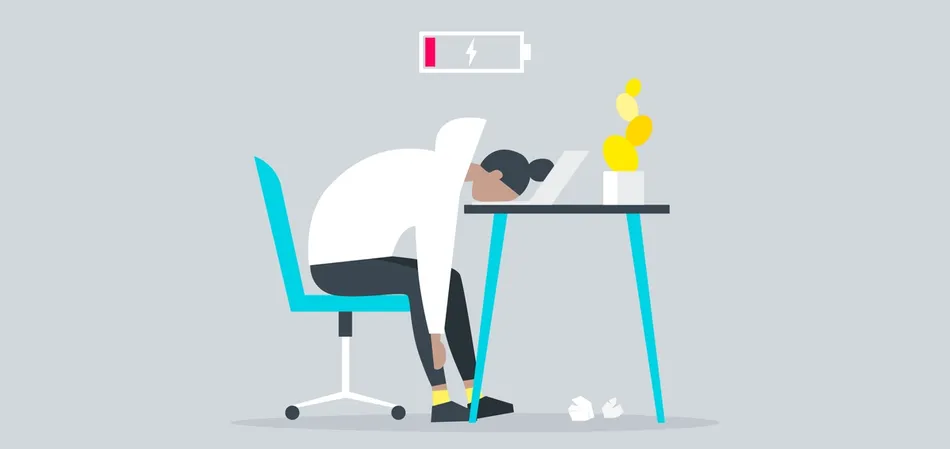
In today’s fast-paced environment and hustle culture, many of us feel the pressure to do more with less. However, there’s only so much most people can take before we cry out “I’m done. I just can’t do this anymore”. If that feeling is a day-to-day thing, you may be experiencing the dreaded burnout.
Burnout is more than just a buzzword. It’s a state of mental, emotional, and physical exhaustion caused by prolonged stress at work. Burnout can have serious consequences for a person’s quality of life, especially since it is not necessarily exclusive to workplaces.
The exhaustion, low motivation, and stress we feel at work don’t end when we arrive home to our families. The reverse is also true: if you’re burned out because of your demanding responsibilities at home, you’ll carry that to work the next day, too.
But how can you tell if you’re burned out? Indeed, burnout symptoms often coincide with those of stress and depression. Here’s where new research may help.
Researchers at the Norwegian University of Science and Technology (NTNU) have devised a new tool that can identify if a person is at risk of burnout. They’ve validated the method in a new study involving more than 500 participants, finding that about 13% of Norwegian employees face a high risk of burnout.
If you’re curious to see where you stand, the researchers published a simplified version of this test online.
Signs and symptoms of burnout
According to Leon De Beer, an associate professor at the Norwegian University of Science and Technology (NTNU), there are four major signs that a person may be suffering from burnout.
- You feel mentally exhausted at work.
- You struggle to feel enthusiastic about your job.
- You have trouble concentrating when working.
- You sometimes overreact at work without meaning to.
In their new study, De Beer and colleagues begin by critiquing existing burnout measures. They highlighted the need for a more nuanced understanding and assessment of burnout that goes beyond the traditional focus on exhaustion. As such, they outlined the development of the Burnout Assessment Tool (BAT).
BAT is designed to address these needs by offering a multidimensional measure of burnout, incorporating both core and secondary symptoms. Beyond just exhaustion, it considers aspects like mental distance, and cognitive and emotional impairment.
Core Symptoms:
- Exhaustion: Described as a severe loss of energy manifesting both physically and mentally. Specific symptoms include feeling drained, inability to relax after work, and feeling physically weak.
- Emotional Impairment: Characterized by intense emotional reactions and feelings of being overwhelmed. Symptoms include irritability, frustration, and feeling unable to control one’s emotions at work.
- Cognitive Impairment: Indicated by problems with memory, attention, concentration, and overall cognitive performance. This includes difficulty thinking clearly, forgetfulness, and being easily distracted.
- Mental Distance: A psychological distancing from work, marked by a reluctance or aversion to work, cynicism, and a lack of enthusiasm.
Secondary Symptoms:
- Psychological Distress: Non-physical symptoms resulting from psychological problems, such as sleep issues, tension, anxiety, and disturbances caused by noise and crowds.
- Psychosomatic Complaints: Physical complaints not explained by physical disorders but linked to psychological problems, like headaches, muscle pain, and frequent sickness.
- Depressed Mood: Feelings of sadness, inability to experience pleasure, feelings of powerlessness, and disappointment in oneself.
The BAT test was devised as a way of catching the symptoms of burnout early. Just like any other mental condition, the more time passes, the more entrenched the feeling becomes and the harder it is to recover. The test is designed based on both theoretical framework and empirical research. It tests 23 parameters for core symptoms and 11 for secondary symptoms — the online version you can access from the link above is a simplified version.
Healthier office, healthier workers
“Previously, we have not had a detailed enough measurement tool for use in both the field of practice and research that identifies workers who are at risk of burnout,” De Beer told Norwegian SciTech News.
Yet, identifying risk is only part of the equation. Addressing burnout requires a holistic approach that encompasses both individual and organizational strategies. From fostering supportive work environments to promoting work-life balance, the path to recovery and prevention is not easy to navigate. Sometimes, a person may be forced to change companies or even careers — but that’s a privilege very few can afford.
“We can deal with burnout through individual treatment, but it is of little use if people return to a workplace where the demands are too high and there are few resources. It is then highly likely that the employee will become ill again. Therefore, it is important to create good working conditions and structures that safeguard the health of employees,” says Professor Marit Christensen at NTNU’s Department of Psychology.
The BAT test and new findings appeared in the Scandinavian Journal of Psychology.






